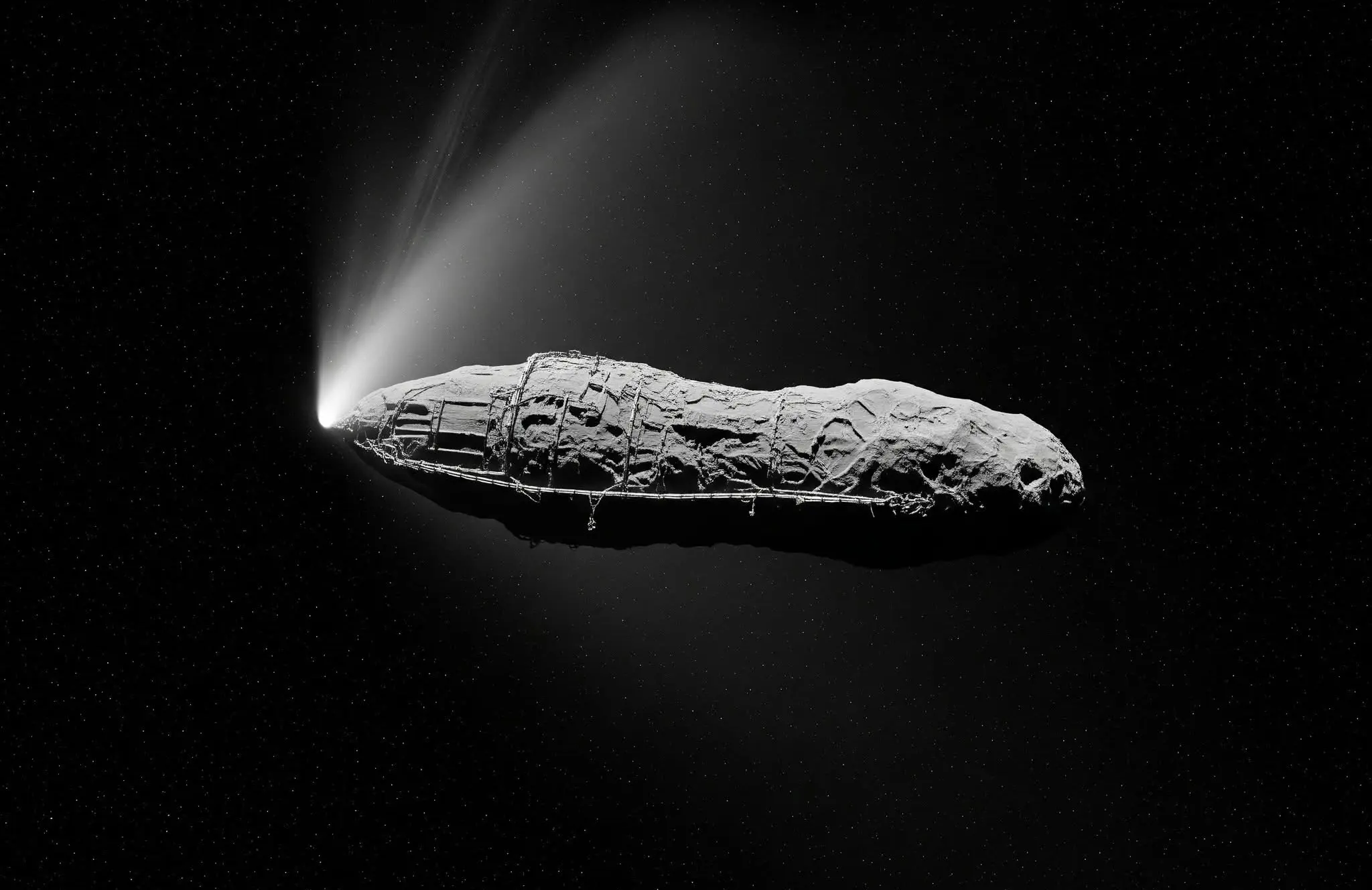NASA’s alleged 3I/Atlas leak and Japan’s mesmerizing sky photo captivate millions online
-
 Dust-covered 3I/Atlas structure resembling ‘Oumuamua/ Source: X / @NASA (Unconfirmed image circulating online)
Dust-covered 3I/Atlas structure resembling ‘Oumuamua/ Source: X / @NASA (Unconfirmed image circulating online)A photo claiming to be a NASA leak of the interstellar object 3I/Atlas has gone viral on social media. Around the same time, a beautiful sky photo from Japan also caught everyone’s attention. Both pictures have become popular online, sparking curiosity and conversation among space fans and regular viewers alike.
The alleged NASA leak
3I / Atlas Tracking and Behavior Update
— Mr EveryThing (@Phatfighter8284) October 29, 2025
October 29, 2025 from Japan
Let the conversation begin pic.twitter.com/10cvrftnd6A photo purported to be of 3I/Atlas hit the internet early this week, with many users claiming it originated from NASA’s internal systems and showed a close-up of the mysterious space object in question.
3I/Atlas appears, in the picture, to be a glowing structure with a bluish-green light around it. Some online users described the shape of it as unusual and suggested it could be something artificial.
However, NASA has not confirmed that this image is real, and the agency has not made any official statement about any leak. Scientists have also warned people against believing unverified posts shared on the internet.
Experts say the image could have easily been a digitally edited photo or even real telescope data with added filters to make it look more dramatic.
What we know about 3I/Atlas
3I/Atlas is an interstellar object, which means it came from outside our solar system. It is the third known object of its kind after ‘Oumuamua (2017) and 2I/Borisov (2019).
It is being watched closely by astronomers as this reaches our solar system. According to scientists, based on its movements, 3I/Atlas would pass by once and will not return.
There is no evidence that it is artificial or is connected with any extra-terrestrial life. The most common belief concerning the composition of comets among scientists is that they are composed of rock, ice, and dust.
Japan’s viral sky photo
🚨Alleged new @NASA photo of 3I/ $ATLAS
— $Atlas CTO (@Atlas__CTO) November 4, 2025
(Not Confirmed).
If this is real it changes Everything, as this shows clearly a SpaceCraft defined by structures lines covered in a ton of Dust from it's travel.
Shape shown here is similar to Oumuamua!
web - https://t.co/3Ws6SieGRQ… pic.twitter.com/iqgmfyhZVEWhile the NASA leak was trending, another photo went viral for a very different reason. A Japanese photographer captured a stunning view of the night sky.
The photo showed the Milky Way and what looked like faint Aurora lights glowing above a mountain. The image was taken on a clear night, and people online called it one of the most peaceful and beautiful space photos of the year.
Many users shared the picture, saying it reminded them of how amazing the sky can look without any filters or editing.
How social media responded
The Japanese have leaked the 3i Atlas close up footage #3IATLAS pic.twitter.com/DmwexT1TfL
— Mike Unfiltered ✨ 🇺🇸 (@Michael_Favreau) October 22, 2025Both images — the NASA “leak” and the Japanese sky photo — quickly spread online. Hashtags like #3IAtlas, #NASAleak, and #JapanSkyPhoto started trending on X (formerly Twitter) and Reddit.
Some people believed the NASA photo was real and hinted at secret discoveries. Others said it was probably fake but still interesting.
Scientists later explained that no official NASA data was leaked, and that many space images shared online are often altered or misunderstood.
What it shows about space curiosity
The two pictures have nothing to do with each other, but they both went viral on social media. They illustrate that space fascinates people to this day, and anything unusual catches the public's eye.
NASA hasn't given any new update about 3I/Atlas yet, but scientists are still studying it from different observatories in the world.
TOPICS: 3I/ATLAS, 1I/ʻOumuamua and 3I/ATLAS, 3I/Atlas Alien spaceship, NASA
- YouTube removes AI-generated 3I/ATLAS videos impersonating Harvard Professor Avi Loeb
- New analysis presents unusual features documented in the 3I/ATLAS trajectory and activity
- Periodic light variability in interstellar object 3I/ATLAS linked to jet activity
- What we know so far about 3I/ATLAS: Everything understood to date